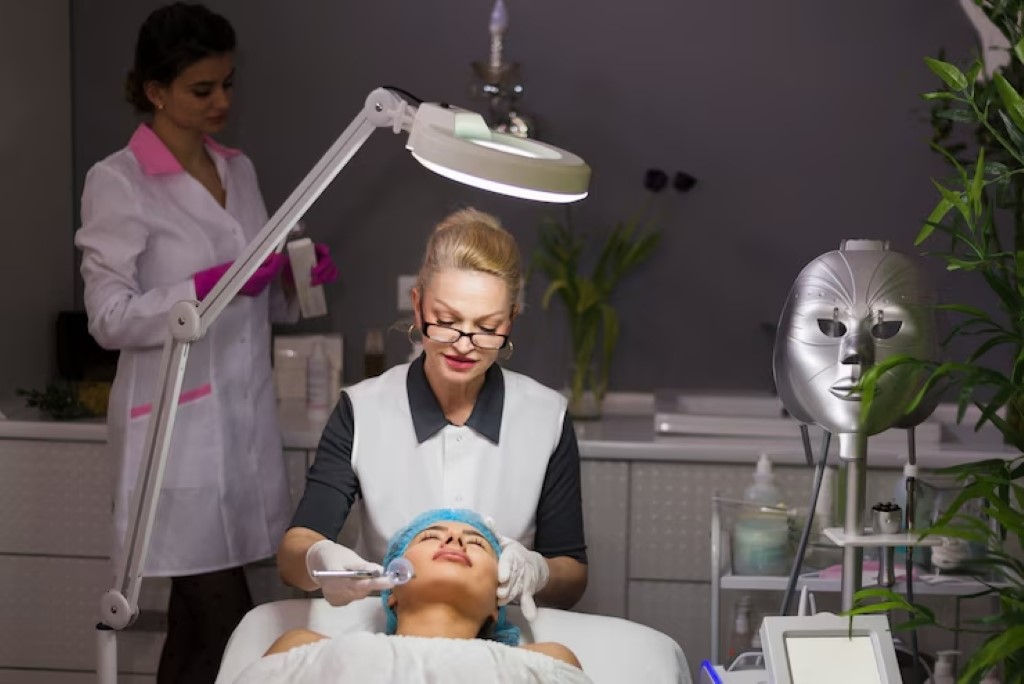In the pursuit of beauty and youthfulness, individuals are increasingly turning to cosmetic enhancements such as Botox injections. As the demand for these treatments continues to rise, so too does the need for innovative technologies that can enhance the safety, effectiveness, and overall patient experience.
In this article, we delve into the world of Botox clinics and explore the cutting-edge tech innovations that are revolutionizing the field, ushering in a new era of digital transformation and aesthetic rejuvenation.
Understanding Botox: A Brief Overview
Before delving into the technological advancements shaping Botox clinics, it’s essential to understand what Botox is and how it works. Botox, short for botulinum toxin, is a neurotoxic protein derived from the bacterium Clostridium botulinum.
When injected into specific muscles, Botox temporarily paralyzes them, reducing the appearance of wrinkles and fine lines. It’s a popular treatment for smoothing out crow’s feet, frown lines, and forehead wrinkles, among other cosmetic concerns.
The Traditional Approach: Manual Injections and Expertise
Historically, Botox treatments were administered using a manual injection technique, relying heavily on the skill and expertise of the practitioner. While effective, this approach had its limitations, including the potential for variability in injection precision and patient outcomes.
Additionally, the manual nature of the process made it challenging to accurately assess facial anatomy and customize treatments to individual patients.

The Rise of Digital Technologies in Botox Clinics
In recent years, Botox clinics have embraced digital technologies to overcome the limitations of traditional approaches and enhance the overall treatment experience.
These cutting-edge innovations encompass a wide range of tools and techniques designed to optimize every aspect of the treatment process, from initial consultation to post-treatment care.
1. Advanced Imaging Systems
One of the most significant advancements in Botox clinics is the integration of advanced imaging systems. These systems, which include 3D facial scanners and high-resolution cameras, allow practitioners to capture detailed images of the patient’s face from multiple angles.
By analyzing these images, practitioners can gain valuable insights into the patient’s facial anatomy, identifying areas that would benefit most from Botox treatment.
2. AI-Driven Analytics
Artificial intelligence (AI) has also emerged as a powerful tool in the realm of Botox treatments. AI-driven analytics platforms leverage machine learning algorithms to analyze facial images and patient data, helping practitioners develop personalized treatment plans tailored to each individual’s unique aesthetic goals and anatomical characteristics.
This data-driven approach enhances treatment precision and customization, leading to more satisfying outcomes for patients.
3. Virtual Consultations
In response to the growing demand for telemedicine services, many Botox clinics now offer virtual consultations. These remote consultations allow patients to discuss their treatment goals and concerns with a qualified practitioner via video conference, eliminating the need for an in-person visit.
Virtual consultations improve accessibility for patients, particularly those who may have mobility limitations or live in remote areas, while also streamlining the consultation process for practitioners.
Advantages of Digital Technologies in Botox Clinics
The integration of digital technologies into Botox clinics offers a multitude of benefits for both practitioners and patients alike.

1. Precision and Accuracy
By leveraging advanced imaging systems and AI-driven analytics, practitioners can achieve a higher level of precision and accuracy in Botox treatments. Detailed facial analysis enables practitioners to target specific muscles more effectively, reducing the risk of over- or under-treatment and ensuring natural-looking results.
2. Personalization
Digital technologies allow practitioners to personalize Botox treatments based on each patient’s unique facial anatomy and aesthetic preferences. AI-driven analytics provide valuable insights into facial structure and dynamics, enabling practitioners to tailor treatment plans to address individual concerns and achieve optimal outcomes.
3. Efficiency and Convenience
Virtual consultations and digital scheduling systems streamline the treatment process, making it more convenient for patients to access care. By reducing the need for in-person visits and administrative paperwork, digital technologies save time for both patients and practitioners, improving overall workflow efficiency.
4. Enhanced Safety
The use of advanced imaging systems and AI-driven analytics enhances safety by providing practitioners with valuable insights into patient anatomy and potential treatment risks. By identifying anatomical variations and contraindications upfront, practitioners can minimize the risk of adverse events and ensure the highest level of patient safety.
Future Directions: The Next Frontier of Innovation
As technology continues to advance, the future of Botox clinics holds even more exciting possibilities for innovation and transformation.

1. Augmented Reality (AR) and Virtual Reality (VR)
Emerging technologies such as augmented reality (AR) and virtual reality (VR) may soon revolutionize the way Botox treatments are planned and administered. AR and VR systems can create immersive, interactive simulations that allow practitioners to visualize treatment outcomes in real-time, providing valuable feedback and enhancing treatment precision.
2. Next-Generation Formulations
Advancements in nanotechnology and biocompatible materials may lead to the development of next-generation Botox formulations. These formulations could offer longer-lasting results with fewer injections, reducing the need for frequent treatments and enhancing patient satisfaction.
3. Remote Monitoring and Follow-Up
Remote monitoring technologies may enable practitioners to monitor patient progress and outcomes remotely, allowing for more personalized follow-up care. By tracking treatment results over time, practitioners can adjust treatment plans as needed and ensure optimal long-term outcomes for patients.
Conclusion
In conclusion, the digital facelift of Botox clinics represents a significant advancement in the field of cosmetic enhancements. By integrating advanced imaging systems, AI-driven analytics, and virtual consultation platforms, Botox clinics are revolutionizing the way treatments are administered and managed, enhancing precision, safety, and patient satisfaction.



